The Complete Guide to Carousel Ads on Facebook & Instagram
April 30, 2025
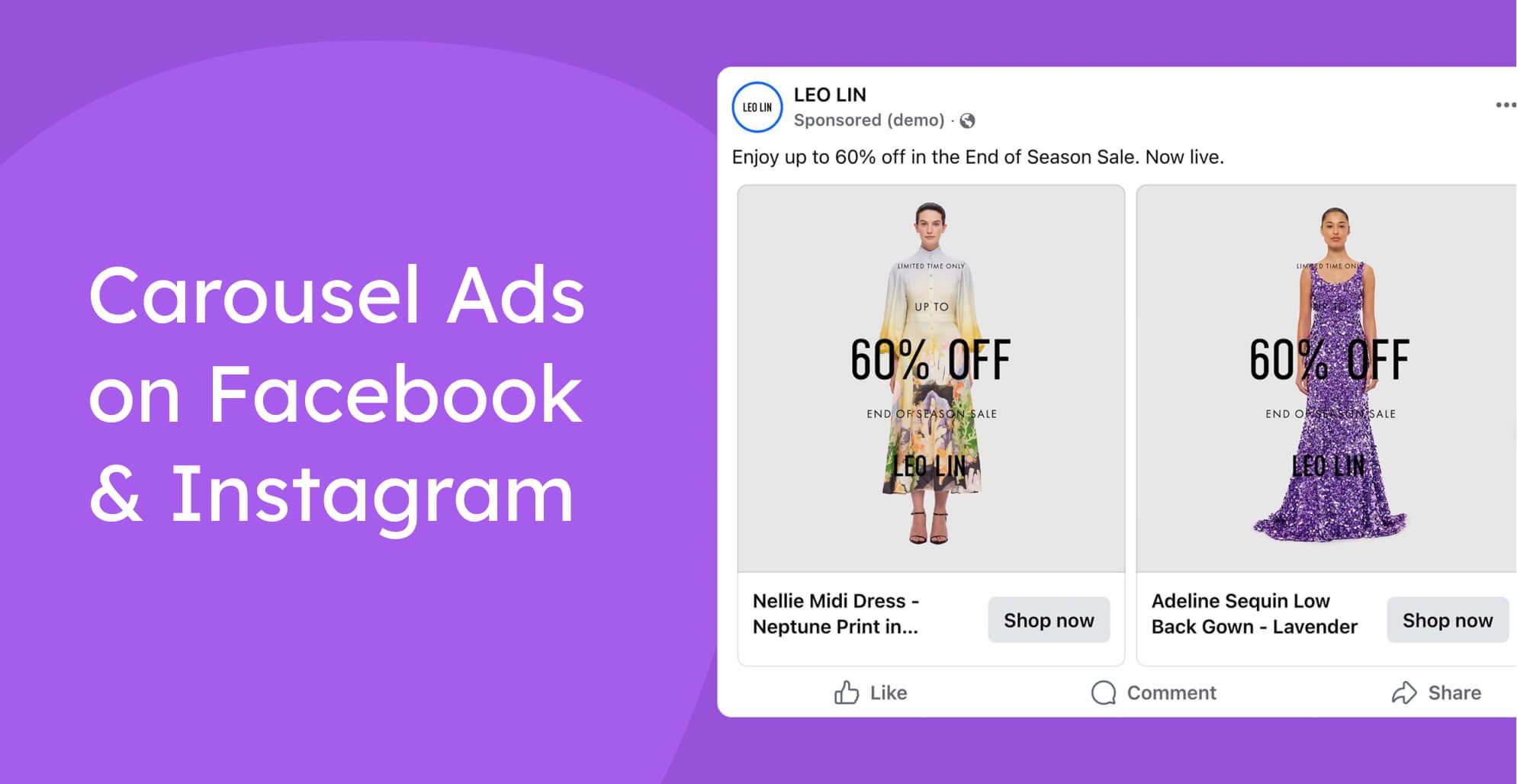
Ever feel like you're gambling with your ad budget? You pick one product image, cross your fingers, and hope it resonates with shoppers.
What if instead you could show multiple products in a single ad and let customers choose what interests them?
That's exactly what carousel ads deliver. Users swipe through multiple images or videos without leaving their feed, with each card featuring its own image, headline, and link.
.jpg)
When created strategically, carousel ads outperform other formats. And connecting them to your product catalog takes it even further, letting Meta’s algorithms match each person with products they're most likely to buy – amplifying an already effective ad format.
However, as with any high-performing ad format, there are best practices to follow if you want to maximize your results.
Let’s explore what makes carousel ads truly effective.
What Are Facebook and Instagram Carousel Ads and Why They Work
Carousel ads are scrollable cards that users swipe through, each displaying a different image or video, headline, and link.
There are two main types of carousel ads:
Manual carousel ads, where you select each image, write each headline, and choose each link destination yourself. Everyone sees the same products in the same order.
Catalog carousel ads (also called dynamic product ads) that connect to your product feed and use Meta’s algorithms to automatically display products based on what each person is most likely to buy.
.jpg)
We’ll explain the differences shortly, but in both cases, the format packs up to 10 cards into a single ad unit. That's 10 products, 10 messages, in practically the same screen real estate as one static ad.
What makes carousel ads so effective isn't just the extra content. It's how naturally people interact with them. That horizontal swiping motion is burned into our muscle memory from years of smartphone use.
When someone sees something interesting, they instinctively swipe to see what's next – no instructions needed. This creates a shopping experience that feels completely organic within the social feed.
Where Do Carousel Ads Appear on Facebook and Instagram?
Carousel ads can be placed into practically every corner of the Facebook and Instagram experience:
Facebook and Instagram feeds: The classic scrolling experience, where most carousel ads are seen
Stories: Vertical, full-screen carousel cards that users tap through
Reels: Appearing between short-form videos
Marketplace: Where users are already in shopping mode
Instagram Explore: Reaching people based on their interests
Right column (on desktop): A smaller but still effective format
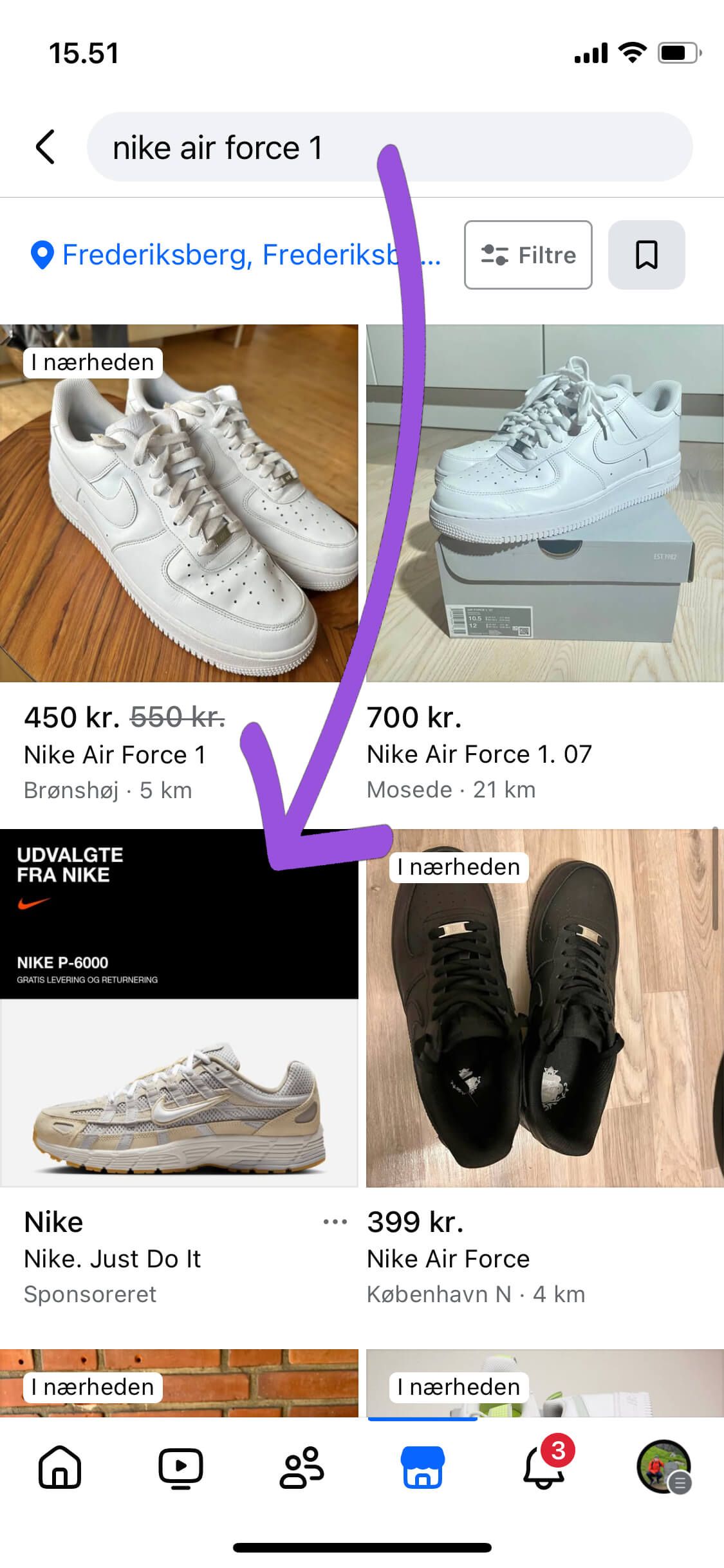
Facebook can even transform your carousel into single-image ads for certain placements where the full carousel experience doesn't fit. This useful in-built flexibility means your carousel ads reach customers wherever they spend their time.
Creative Ways to Use Carousel Ads for eCommerce Growth
While showing multiple products is the most common use, carousel ads are more versatile than many appreciate. Consider these uses:
Tell a story: Create a brand or product-driven narrative that unfolds card by card
Feature spotlight: Highlight different benefits of the same product
Before and after: Show changes or transformations across multiple cards
Step-by-step guides: Walk users through a process or tutorial
Product customization: Show different colors, styles, or configurations
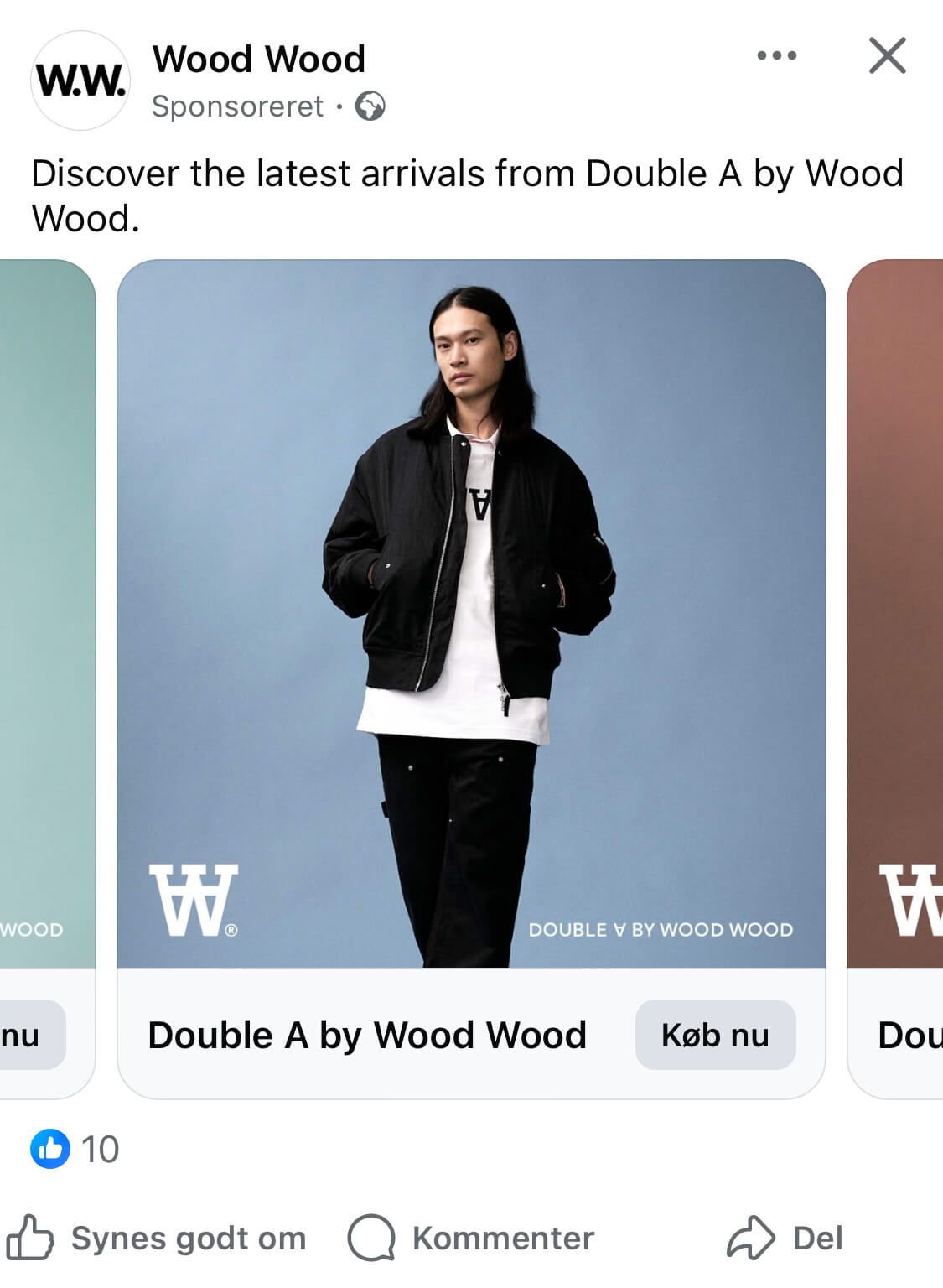
The common thread is that any carousel ad is designed to be interactive. Users actively engage by swiping, which keeps them connected to your ad longer than static formats.
How to Set Up Facebook Carousel Ads in Meta Ads Manager
Setting up your first carousel ad might seem intimidating, but it's actually pretty straightforward once you know the steps. Let's walk through the process from start to finish:
Create Manual or Catalog Carousel Ads in Ads Manager
First, head to Facebook Ads Manager and create a new campaign. After selecting your objective, choose "Carousel" as your format.
This is where you face your first big decision: manual or dynamic (catalog)?
For manual carousel ads:
You'll upload each image individually (aim for 1080×1080 pixels for best results)
Write custom headlines and descriptions for each card
Set individual destination URLs for each card
Arrange the cards in your preferred order
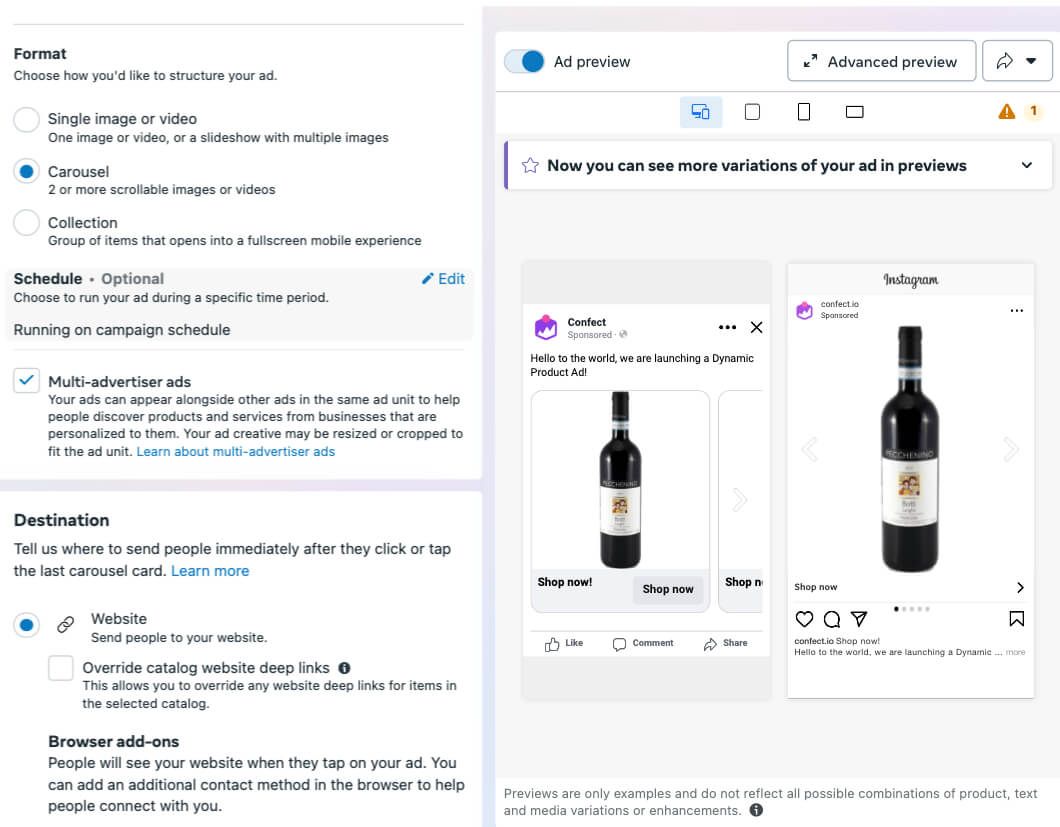
For catalog carousel ads:
Connect your product catalog if you haven't already
Select which product set to feature
Write a single headline and description that works across products
Choose how you want products selected (viewed products, bestsellers, etc.)
Both options have their place, but catalog ads are generally easier to set up and maintain for product-focused advertising. We’ll run over performance differences shortly.
Choosing and Optimizing Your Call-to-Action for Carousel Ads
For catalog ads, you can set a single CTA that applies to all products. For manual carousels, you could technically use different CTAs for each card, though consistency usually works better.
Writing High-Converting Headlines and Descriptions
The text accompanying your carousel can make or break its performance. Here's what typically works well:
For headlines:
Keep them short to avoid truncation
Include pricing if competitive (especially for catalog ads)
Focus on benefits rather than features
Create a sense of urgency when appropriate
.jpg)
For descriptions:
Use the primary text field to give context to the whole carousel
Keep copy scannable and direct
Test question formats to engage curiosity
Highlight offers, discounts, or limited availability
Remember that with catalog ads, your headlines often pull directly from your product feed titles, so make sure those are optimized as well.
Testing Strategies to Improve Facebook Carousel Ad Performance
Carousel ads offer numerous testing opportunities beyond your classic A/B tests:
Test card order (for manual carousels)
Compare single headline versus individual headlines per card
Try different image styles (product-only vs. lifestyle)
Test showing prices in the images versus in text only
Compare video cards versus static image cards
The key is to test one element at a time so you can clearly identify what's moving the needle on performance.
What Are Catalog Carousel Ads and Why They Drive ROAS
Now let’s talk about carousel ads’ highest form: catalog ads, also known as dynamic ads.
They are an extremely important tool for any ecommerce company - Carousel ads simply perform way better with this dynamic format:
| Performance of Carousel Ads | Normal ads | Catalog Ads |
|---|---|---|
| ROASReturn On Ad Spend | baseline | +111% |
| CPACost Per Purchase | baseline | -44% |
| CTRClick Through Rate | baseline | +59% |
Rather than manually selecting which products to feature, catalog ads allow Meta's algorithms to choose the most relevant products for each person who sees your ad.
That is why Catalog Ads perform so extraordinarily well.
They connect directly to your product feed – the same data you might use for Google Shopping or your website. This feed contains all your product information, including images, titles, descriptions, pricing, and availability.
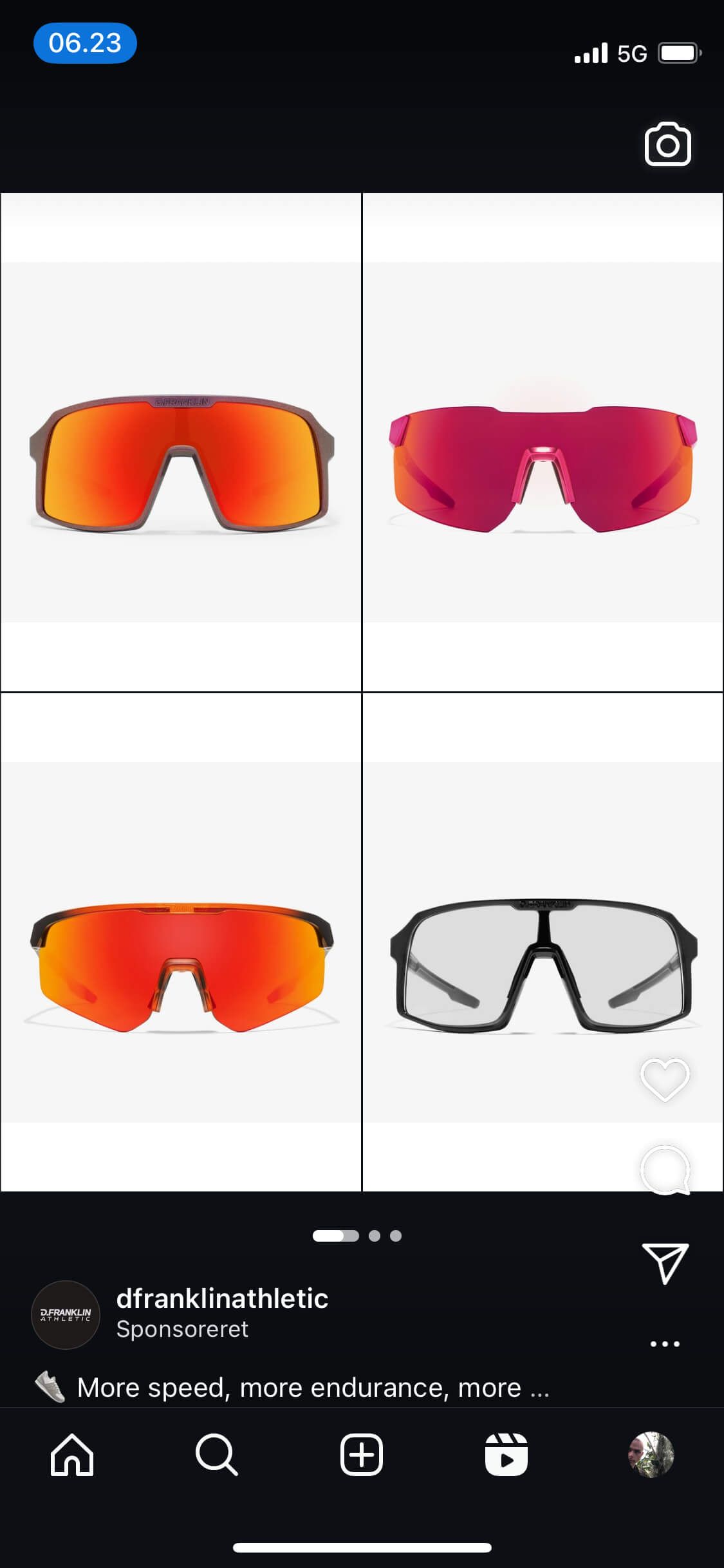
Once connected, Meta's algorithms can dynamically select which products to show each person based on their behavior and interests. This creates a fundamentally different advertising experience:
Someone who viewed red shoes on your site might see those exact shoes, plus similar styles
A shopper who abandoned their cart sees the products they were about to buy
Someone who's never visited your site but matches the profile of your customers might see your bestsellers
The system constantly learns and optimizes, showing each person products they're most likely to purchase based on real browsing and buying patterns. It's like having thousands of personalized ads running simultaneously – but you only need to set up one campaign.
How Catalog Carousel Ads Work and Perform vs Manual Ads
Our data shows catalog carousel ads outperform manual carousel ads by:
111% better ROAS (that's more than double the return!)
44% better Cost Per Purchase
59% higher Click Through Rate
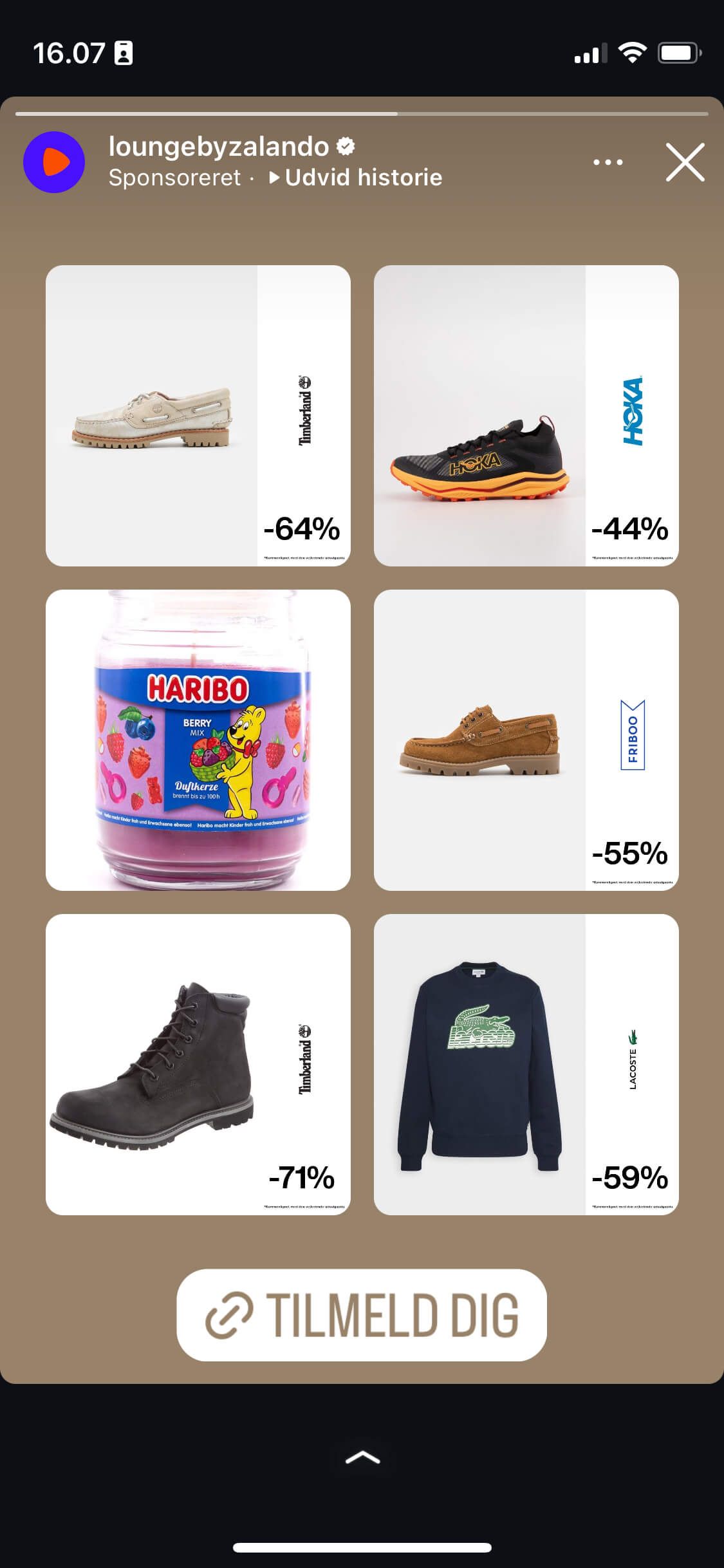
Interestingly, the conversion rate from traffic is almost identical between catalog and manual carousel ads (only 1% difference). This tells us the magic happens before the click – catalog ads are simply much better at showing the right products to the right people.
Why Marketers Use Catalog Carousel Ads to Scale Performance
For e-commerce managers and paid social specialists, catalog carousel ads solve multiple problems at once:
Set-it-and-forget-it simplicity: Once connected to your product feed, they require minimal maintenance
Write once, apply everywhere: You just need one good ad copy that works across your catalog
Dynamic updates: Price changes, new products, and inventory status update automatically
Personalization at scale: Every viewer sees products most relevant to them
No creative bottlenecks: No waiting for designers to create assets for every product
In addition to that headline 111% ROAS improvement vs manual carousel ads, the efficiency gain is massive.
With manual carousels, you might spend hours creating separate images, writing unique copy for each card, and manually updating everything when products change.
Catalog ads eliminate virtually all that work while delivering far better performance. It's an elusive marketing win-win – less effort, better results.
Facebook Carousel Ads vs. Other Meta Ad Formats
Facebook and Instagram offer several ad formats, each with their own distinct strengths.
When measured against metrics that matter – conversions, return on spend, and cost efficiency – how do carousel ads really stack up?
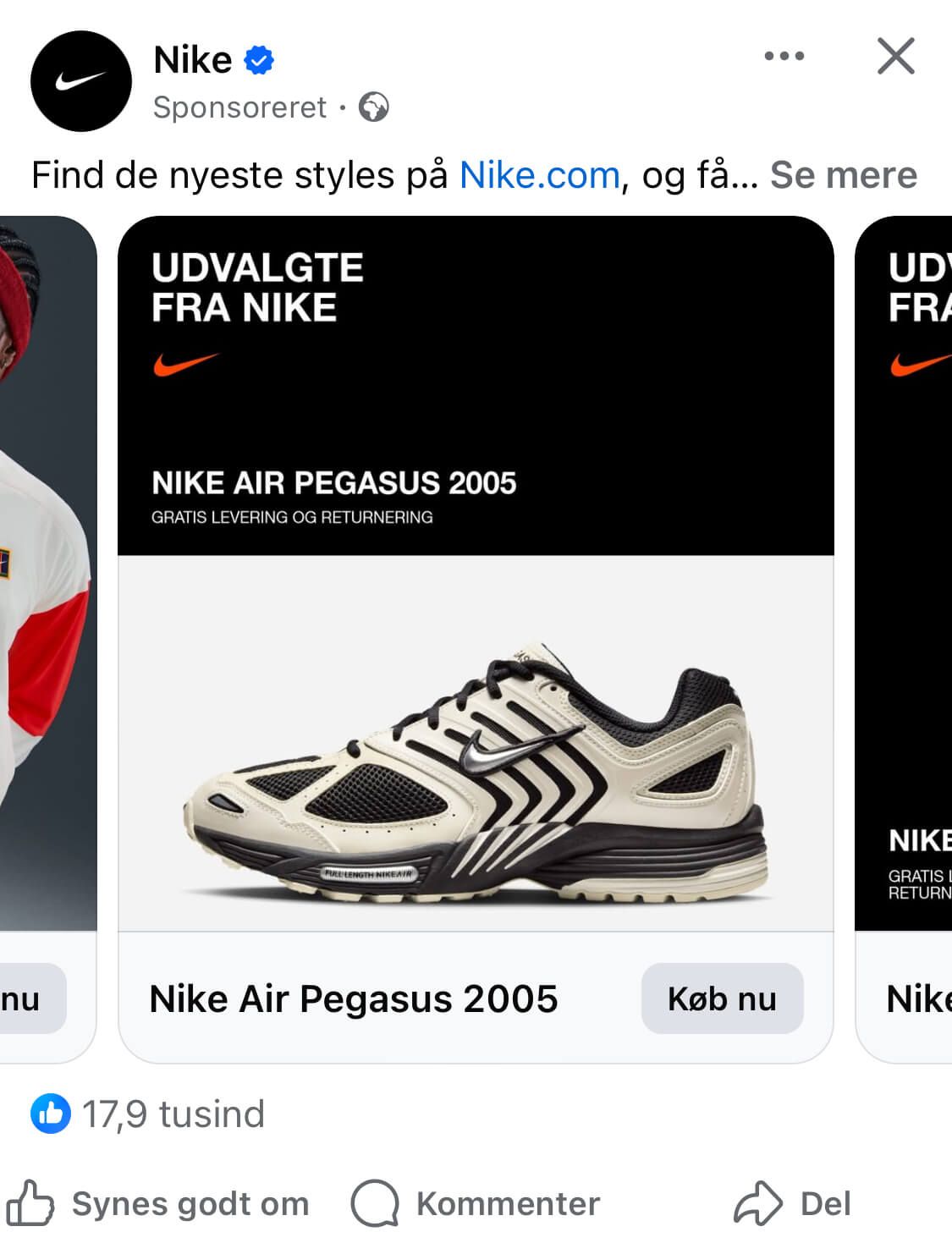
Carousel Ads Performance Benchmarks: ROAS, CPA, and CTR
Let’s ground this in some real-world performance data from Meta ads, we see for our clients on average. Here's how the different ad formats perform compared to the average Meta ads:
| Performance compared to average | Single | Carousel | Collection |
|---|---|---|---|
| ROASReturn On Ad Spend | -15% | +33% | -11% |
| CPACost Per Purchase | +30% | -18% | +4% |
| CTRClick Through Rate | -16% | -3% | +20% |
Catalog Carousel Ads vs Collection Ads: Which Performs Better?
Collection ads look impressive with their immersive "instant experience" that opens into a mini-website when tapped. They're visually striking and can showcase multiple products in a grid layout.
But here's the catch – collection ads require users to commit to a full-screen experience. They have to tap to see the full collection, which adds an extra step between seeing and shopping.
Carousels, meanwhile, give users immediate gratification, so:
Users can browse more products with less commitment
There's no jarring transition to a different experience
Shoppers can quickly find what interests them
This makes carousels particularly effective for both introducing new products and reconnecting with interested shoppers who need a gentle nudge.
Carousel Ads vs Single Image and Video Ads on Meta Platforms
Single image ads are like billboards – they make one strong impression and hope it sticks.
They're fantastic when you're 100% certain which product or message will resonate with each viewer. But therein lies the problem – you rarely know exactly what each person wants to see.
Carousels solve this by showing multiple options and letting users self-select what interests them, with several advantages:
Multiple products mean multiple chances to capture interest
Different messages can appeal to different customer needs
Users actively engage rather than passively viewing
Each swipe extends the time spent with your brand
The data backs this up, too. Our analysis shows carousel ads have a 33% higher Return on Ad Spend (ROAS) compared to other ad formats on average.
While carousel ads actually have a slightly lower CTR (-3.3%) than other formats (collection ads typically get more initial clicks), they more than make up for it with substantially better post-click performance:
16.1% higher conversion rate from traffic that clicks through
18.1% better Cost Per Purchase (you pay less for each sale)
In simple terms, carousels may receive slightly fewer clicks, but the clicks they do receive are far more likely to result in actual purchases. Quality over quantity!
Using Catalog Carousel Ads in Top Funnel and Bottom Funnel Campaigns
What surprised us when digging into the performance data was just how versatile carousel ads are throughout the customer journey – though they absolutely dominate in bottom-funnel scenarios.
Let's break down how and why they work at different stages of the funnel:
| Performance of Carousel ads | Top funnel | Average | Bottom funnel |
|---|---|---|---|
| ROASReturn On Ad Spend | -33% | baseline | +57% |
| CPACost Per Purchase | +16% | baseline | -20% |
| CTRClick Through Rate | -7% | baseline | +15% |
How Carousel Ads Work for Broad Audiences at the Top of Funnel
When targeting cold audiences who've never heard of your brand, carousels let you cast a wider net. Instead of putting all your eggs in one product basket, you can showcase range and variety.
This works brilliantly because:
You don't have to guess which specific product might catch someone's eye
Shoppers can self-select what interests them by swiping
You can introduce your brand personality across multiple cards
Users get a better sense of your product range in one ad
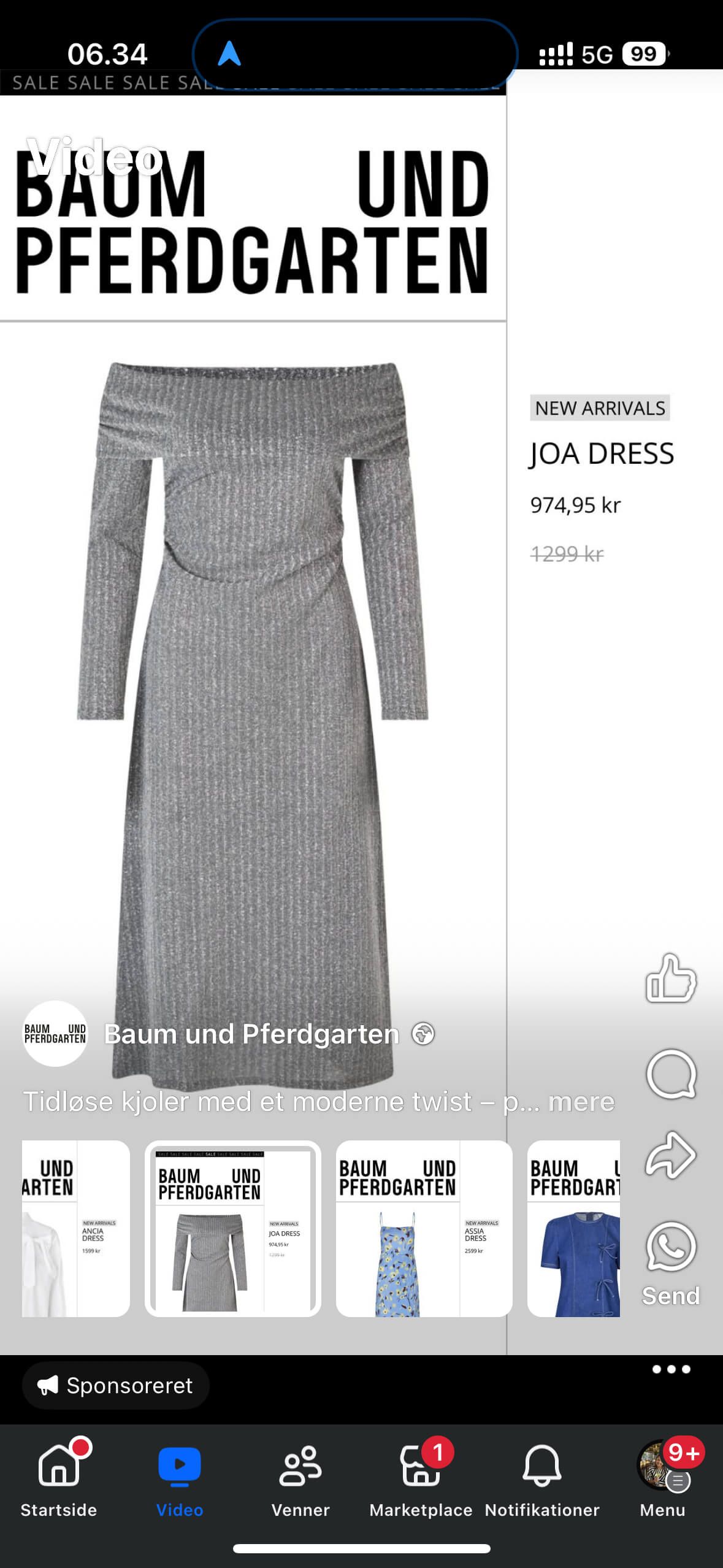
Meta's algorithms are exceptionally good at figuring out which products from your catalog might interest a particular person – even if they've never visited your site before. This means your carousel ads can dynamically show the most relevant products to each viewer, improving your chances of connecting with cold audiences.
The great thing about customer prospecting with carousel ads is their efficiency. They can showcase the most products of any ad format without requiring users to click away or open a separate experience. When you're trying to figure out what resonates with new audiences, that’s invaluable.
Why Carousel Ads Dominate Bottom Funnel and Retargeting
While carousels perform well for prospecting, they absolutely crush it with warm audiences.
Our data reveals they perform a staggering 134% better (ROAS) in the bottom funnel compared to top funnel.
To put that in perspective, most ad formats only perform about 56% better in bottom funnel than top funnel scenarios, so carousels are more than doubling the typical improvement.
When comparing Bottom funnel Carousel ads to Top funnel carousel ads, we also see:
24.6% higher CTR for bottom funnel carousel ads
30.8% better Cost Per Purchase
34.9% higher conversion rate from traffic
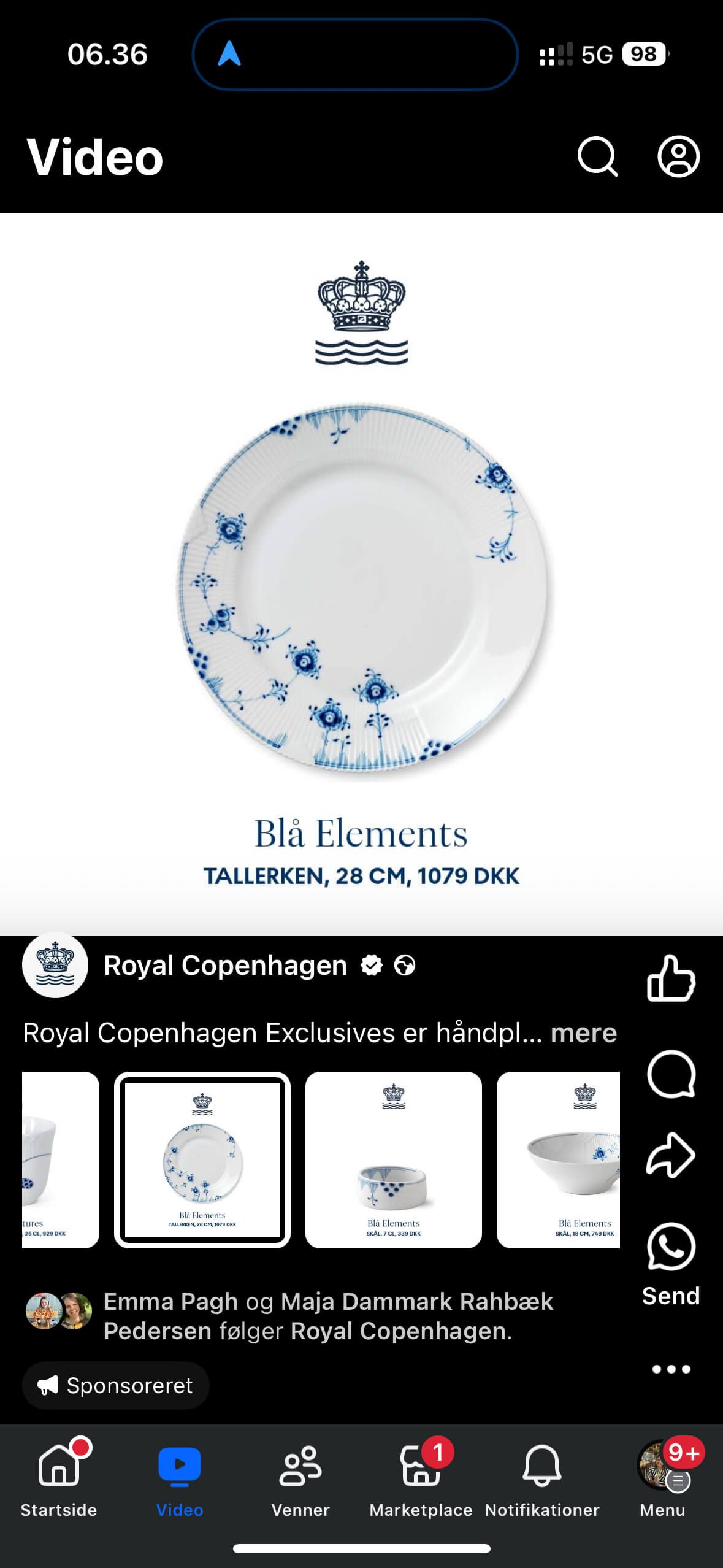
These numbers are drastically better than what we see with other formats, where bottom funnel typically only delivers a 9.7% higher conversion rate.
Why is the improvement for bottom funnel ads so considerable?
When someone has already viewed specific products on your site, carousel ads can display the items they were interested in, along with similar items they might like. That’s perfect for nudging hesitant shoppers back to complete their purchase.
Moreover, the multi-product format works well with cart abandoners. You can remind them of what they left behind while simultaneously suggesting complementary items – a strategy that's much harder to execute with single-image ads.
You can optimise for these outcomes in your ad set settings, where you can leverage different sales tactics:
Show products viewed but not purchased
Cross-sell complementary products
Upsell to premium versions
All in all, robust personalization at the bottom of the funnel is what makes carousel ads so effective at turning browsers into buyers.
Design Tips for High-Performing Carousel Ads on Facebook and Instagram
Creating effective carousel ads isn't just about throwing together a few random product images. The right design choices turn the average carousel into a conversion machine.
We've analyzed thousands of carousel ad designs across 6.5 billion impressions to identify exactly what works and what doesn't.
Here are some of the most impactful design tips from our Catalog Ad cheat sheet:
Maintain Visual Consistency Across All Carousel Cards
When users swipe through your carousel, each card should feel like part of the same family.
Consistent backgrounds, colors, fonts, and photography styles create a smoother, more professional experience that keeps people swiping.
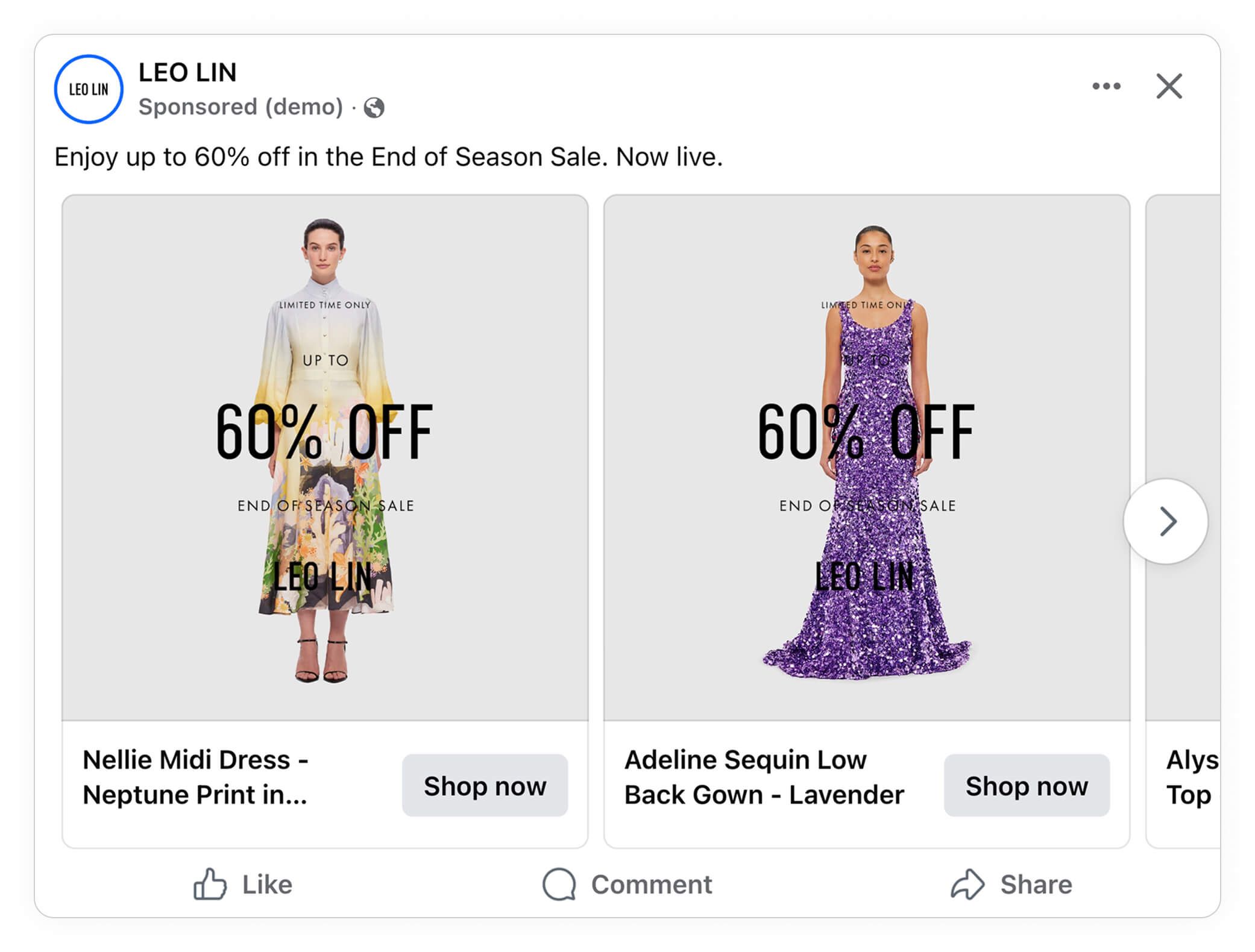
Here are some simple ways to keep your visuals tight and consistent:
Use the same background color or style across all cards
Maintain consistent product photography angles
Keep text placement and sizing similar from card to card
Use your brand colors consistently throughout
Add Unique Value With Each Swipe
Each card should contribute something new rather than repeating the same message. For example, if every card says "Free Shipping!" or "Great Quality!", users will quickly get bored and stop swiping.
Instead, use each card to highlight varied yet pertinent aspects of your products or offers.
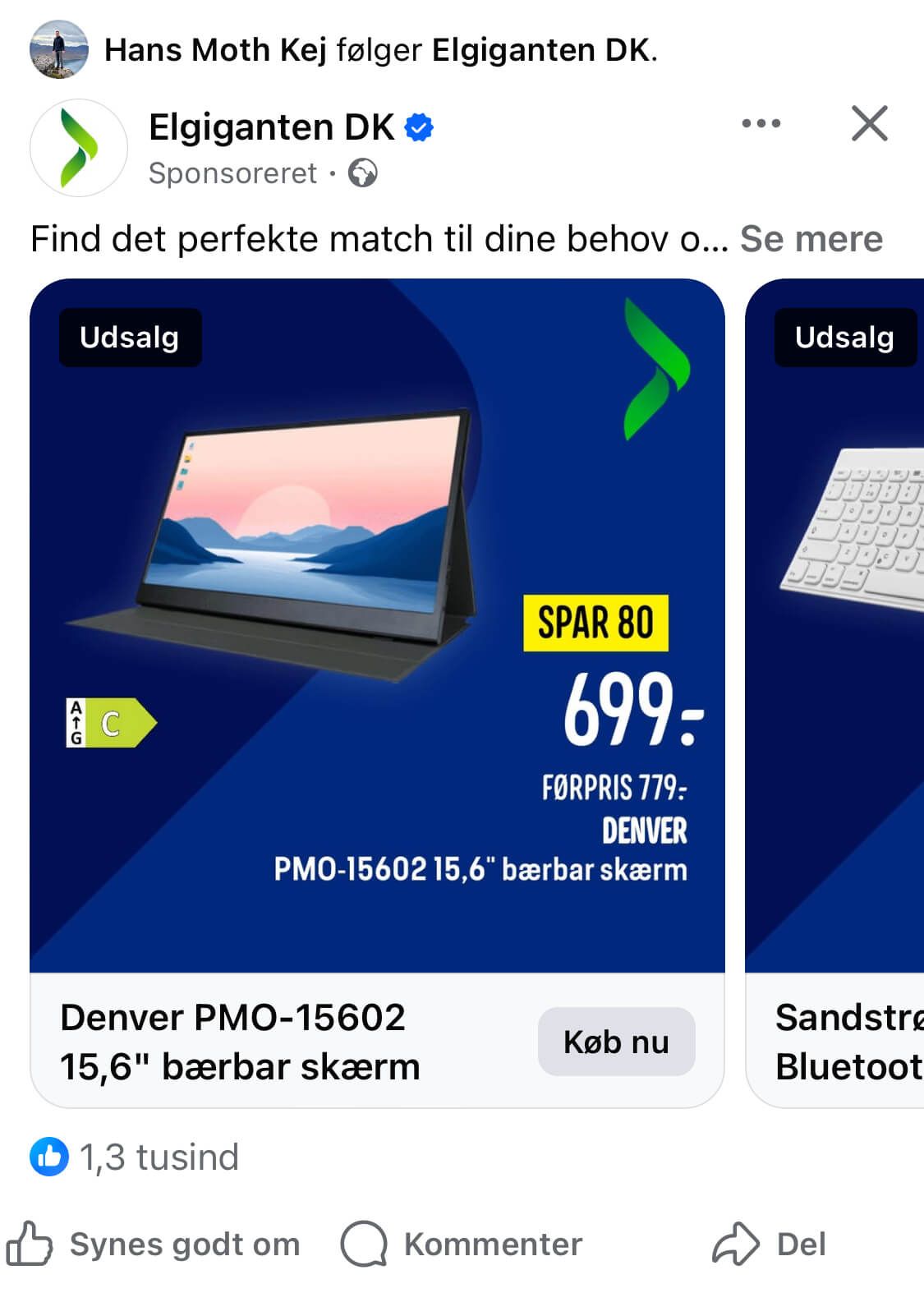
The goal is to reward curiosity with new information that builds interest as customers swipe through.
Help Shoppers Compare Products With Key Information
The most effective carousel ads help consumers quickly compare products based on what matters most to them. Our data shows that performance improves when you consistently include key decision factors across cards.
If price is a deciding factor for your audience, show it clearly on every card. Our research shows that including prices boosts ROAS by an average of 41%. For luxury brands, this improvement is around 35%, while more affordable brands see up to 60% better ROAS.
Beyond price, consider what other information helps your customers decide:
Brand names: Showing the brand name or logo boosts ROAS by 44% on average – and a whopping 62% for luxury products
Product assets: Adding useful visual elements like feature icons, certification badges, or specification graphics improves ROAS by 80%
Savings information: Highlighting the actual savings amount lifts ROAS by 57%
Category information: Helping customers immediately understand what type of product they're looking at drives 64% higher ROAS
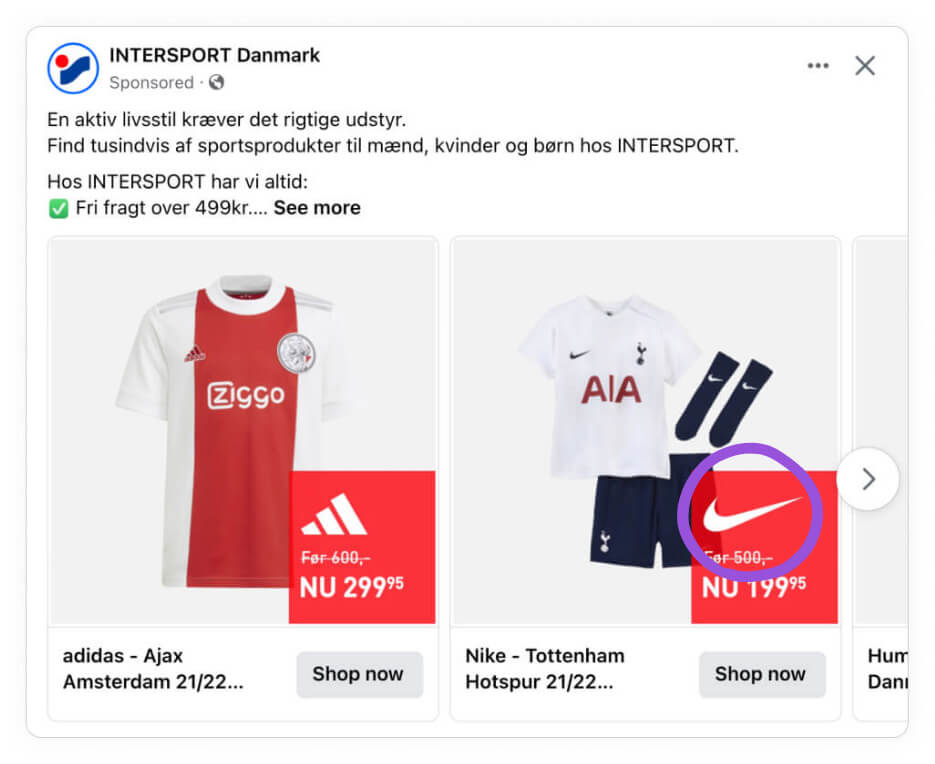
Above: Example of using product logos in Catalog Ads
Use Social Proof to Build Trust and Boost performance
Adding ratings, reviews, or "Popular Choice" indicators boosts ROAS by 31% on average. This strategy is particularly effective for top-funnel audiences who are unfamiliar with your brand, where we see a 58% ROAS improvement.
These trust signals work because they reduce purchase hesitation – observing that other people liked this product reduces purchasing risk.
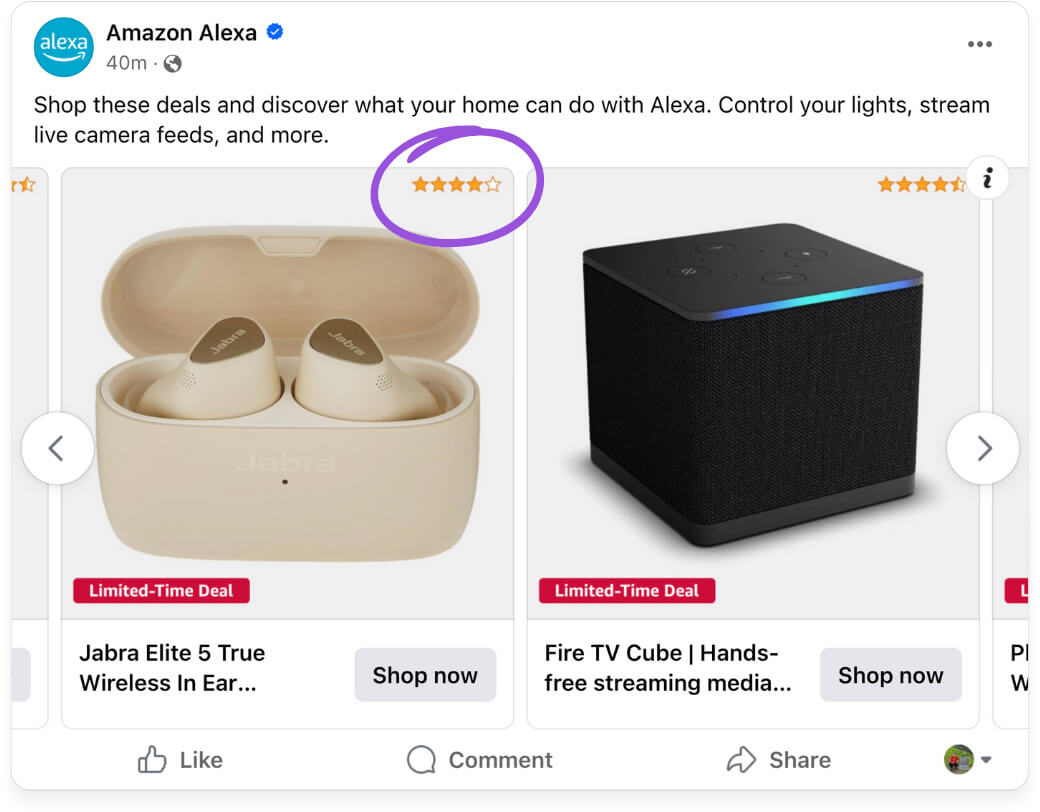
Above: Adding social proof to ad designs is simple but effective
Create Urgency With Sales Badges and Timed Offers
Adding "On Sale" indicators creates a sense of urgency that drives nearly 50% higher ROAS compared to ads without them. This effect is even stronger (68% improvement) in bottom-funnel ads targeting people who've already shown interest in your products.
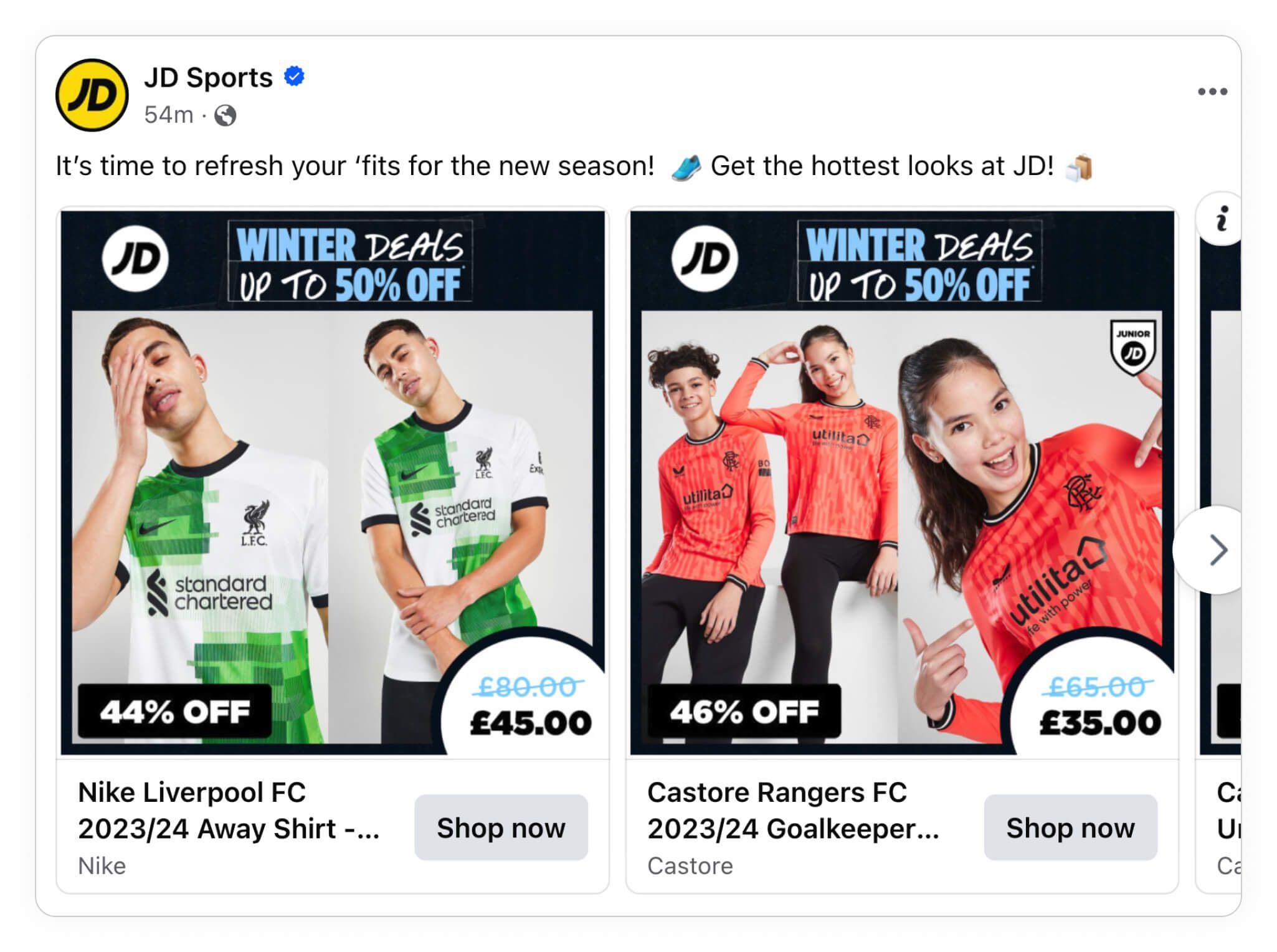
Above: Displaying on-sale designs boosts ROAS significantly
Tailor Carousel Ad Design to Funnel Stage for Best Results
Customer behavior and preferences vary depending on where they are in the funnel, which we can observe through the effectiveness of different designs:
For cold audiences (top funnel):
Social proof is hugely important (+58% ROAS)
Price information helps set expectations (+31% ROAS)
Keep product details simpler
For warm audiences (bottom funnel):
Sales badges create urgency (+68% ROAS)
Price information becomes even more important (+54% ROAS)
Custom labels and product details shine (+73% ROAS)
Additional product images become valuable (+33% ROAS)
Here, we can see how top-funnel audiences need trust and simplicity, while bottom-funnel audiences want detailed information and incentives to buy now.
To really turbo-charge your ad designs, check out the full cheat sheet here.
Final Thoughts: Are Facebook Carousel Ads Right for Your Brand?
Carousel ads have earned their place as a go-to format for e-commerce advertisers, and for good reason. They offer the perfect blend of creative flexibility – versatile enough to work throughout the customer journey but structured enough to drive consistent results.
The results genuinely do speak for themselves: 33% higher ROAS than other formats and 16% better conversion rates. They're particularly effective for retargeting, where they perform 134% better than in prospecting campaigns.
To truly max out your ad performance, connect carousels to your product catalog. Our data shows that catalog carousels outperform manual ones by 111% in ROAS – a colossal improvement that can make a substantial difference to your sales.
Want to take your carousel ads to the next level? Confect lets you design high-converting catalog ads that blend your brand identity with performance-driven design elements.
Try Confect free today and join thousands of marketers who are transforming their carousel ads from basic to brilliant.
